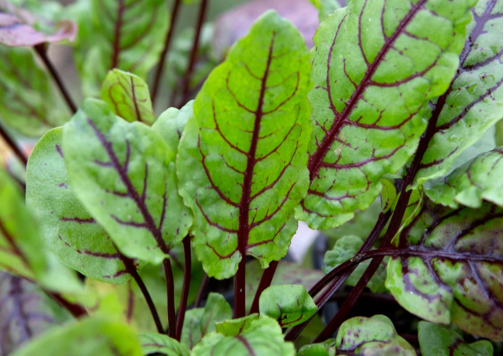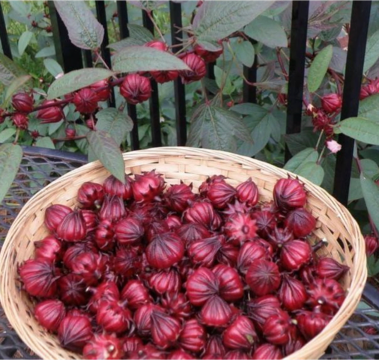School Food by Lucia Daniels
The refectory table, nuns, black as crows, bent over grace
My fluted water glass at the ready,
To help wash down Friday’s fish balls.
With luck you’d be seated at a table with drawers,
into which, the offending ball could be slipped.
If not there, then popped in a pocket of your uniform.
Either way, the discarded food would lurk, gathering mould,
until fished out by the nuns, or our mum.
My Family Kitchen, 1955 by Hilda Castillo
I am in Rancho Quemado in Trinidad and Tobago, West Indies, in our family kitchen. It is a big wooden structure and I am standing in the middle near the two windows. At one window, I can see the four water tanks which filter water from the mains upstairs; these tanks also collect rain water for domestic use by the family. At the other window is the kitchen washing up area with the washing up bowl and the wooden drainer. Overlooking this, I can see the outside toilet or latrine straight ahead. To the left, I can see a small vegetable patch with sweet corn, herbs and beans soon to be harvested. There is also the outside yard with some live stocks with chicken and ducks chasing each other. In the distance is the Brazilian nut tree with sight of fruit – which I will eat in time. I can also see my father, Papa, hacking at a green banana tree so there will be food to eat later with something delicious to make a family meal. My mum, Tanty, will prepare these family meals with much love and passion.
Childhood Memories of Food by Sue Evangelou
A spoon of Malt Extract to keep our colds at bay,
Grannie’s shared yeast tablets at the start of every day.
Swollen tonsils, when a mug of Bovril was all that I could take,
sweetened condensed milk straight from the tin – better than any cake.
School dinners – slimy mash, overcooked cabbage but the gravy was good,
then choc crunch and custard or rice pudding with a dollop of jam for pud.
Dick Barton Special Agent with hot milk before going up to bed,
Yorkshire puddings until my tummy was bursting – enough said!
Pancakes sprinkled with sugar and an orange squeeze on Shrove Tuesday,
homemade lemonade when we danced around the maypole on the 1st of May.
Christmas dates and walnuts minced together in the sponge,
spaghetti hoops on toast now that I couldn’t get wrong.
The boiled eggs we drew faces on each Easter Sunday morning,
my chocolate Easter Egg consumed before next day was dawning.
For Parties – Full of Wind – evaporated milk and jelly beaten full of bubbles,
Heinz tomato soup topped with squares of bread guaranteed to ease all troubles.
Marmite sandwiches cut into dainty squares,
liquorice sticks dipped in sherbet to take away your cares.
Fizzy Dandelion and Burdock for a very special treat,
a plateful of crinkly chips was something hard to beat.
And so the list goes on and there could be so much more
as the memories keep flooding back through that newly opened door.
Story of the Pressure Pot, 1965/6 by Hilda Castillo
I am in Rancho in another family home, with my brother Edward, aka Eddy, in the wooden kitchen which is smaller than the first property. The radio is blazing out the death announcement which streams daily at 12 noon; we can always recognise a friend or family who have passed. My grandmother, Mama, will get her best hat ready for a wake/funeral again. I can hear Tommy our big cat purring and Zaza, the labrador barking loudly to be let in through the back door. Tanty is out visiting my second eldest sister, Norma, in Port of Spain, the capital of Trinidad. Florence, my older sister before me, tells Eddy and me,
“Do not touch the stove, I will cook later.”
But we both want to learn to cook, so, while the cat is out, the mouse will play! We decided to make dahl with yellow lentils in the pressure pot. We prepare the ingredients including water: 3 handfuls of lentil; half an onion; 1 spring onion; Spanish thyme; salt and pepper to taste, and of course a small ripe bird pepper to give it punch. We put the pot on the stove. Eddy knew how to operate the Calor gas tank and so far so good. The pot comes to the boil and the pressure starts to steam and we are getting excited because it’s seems so easy and we are having such fun cooking without Tanty and Florence fussing. Well, there is all this steam and noise, so I tell Eddy, we have to lower the gas and take the pot to the sink and place it in a pot of cold water and then do Tanty’s trick to cool it down before opening the lid. Clever me had seen Tanty doing this so… here we go… put a spoon under the weight… but the steam was so strong and wow… the next thing… one almighty noise and the dahl is up in the air and hits the ceiling! We are both quaking, I in tears, Eddy, says,
“We got to switch off the stove.”
Anyway, we made a pact to tidy up the kitchen as quickly as we could so there will be no visible signs of our escapade. He promises not to tell and so did I, because this offence would certainly earned us a beating for disobedience and potential self-harm. To this day, we have kept our beaks shut! But somehow I think Mum knew. I am still scared of a pressure pot after that ordeal!!
Nigerian Jollof Rice by Yetunde Odularu
Happiness food – that all children love and is a joy for me too. This is fantastic to eat.
Ingredients:
4 cups of rice
5 tablespoons of tomato paste
4 cups chicken stock
1 tablespoon curry powder
1 tablespoon thyme
2 bay leaves
1 onion sliced
1 tomato sliced
1 tablespoon seasoning powder
White pepper to taste
3 red bell peppers
3 plum tomatoes
2 scotch bonnets
For the sauce, blend together:
3 red bell peppers
3 plum tomatoes
2 scotch bonnets
1 onion (diced)
Instructions:
1. In a large pan, preheat the cooking oil. Once oil is hot, add onions (diced) and fry for 3 minutes till onions are soft.
2. Add the tomato paste, fry for 5 minutes, add bay leaves and let it cook in the tomato paste for 2 minutes.
3. Add the blended pepper and allow the pepper to cook until the water is dried and oil is seen floating on the fried pepper.
4. Season with thyme, curry powder, salt to taster and seasoning cubes. Leave to cook for another 2 minutes.
5. Stir in the rice until it is well coated with the sauce. Add chicken stock and cover with a tight fitting lid and bring to boil.
6. Once it starts boiling 3 minutes later, reduce heat to steam until the rice is done.
7. Turn off the heat and add sliced tomato and onions, stir and cover immediately to steam.
8. You can serve with plantain, chicken, vegetables or as desired.
Fostered Food by Dorothea Williams
Nanny Knight couldn’t cook. I mean she could put pots on the fire but her food did not taste nice. And, why oh why did she cook such huge amounts of food that I didn’t like! She was always annoyed with me because I used to spend a long time looking at the lakes of congealed lamb fat on my plate. The product of her “stews”. Long boiled breast of lamb with overboiled mush of carrots, turnips and potatoes. Yes, age 7, I would irritate her by lingering long at table. She would clip my lughole in order to speed up the torturous eating process. Oh, those huge ugly white chunks of fat slopes at the end of the breast of lamb. The cheapest cut in those days. What a struggle to tackle that fat for the little strip of meat clinging stubbornly to the rib underneath. Next to that inedible mass of boiled fat sat white heavy soggy dumplings, saturated in solid grease. I devised ways of ridding myself of that stuff that made me heave. I devised accidents. The bowl would “slip” and the dumpling could roll under the table when she wasn’t looking or was out of the tiny room in the 2 up, 2 down old Victorian terraced house in Hackney. We lived downstairs. No bathroom and an outside loo. Sometimes, when I remembered, I would craftily retrieve the plate liberated food, usually the dumpling from under the table to bin it. Another way was to squish and squash it into my socks and shoes. I was not allowed to leave the table until my plate was clear. Once I vomited and had to eat it. Then I vomited in my skirt and stood up. Then there was Nanny Knight’s version of Yorkshire pudding. That massive tray of heavy stodge that could stop a door! It replaced bread until it was finished. Sometimes there was a little relief to rid us of that stuff. Jam! Jam on that thick heaviness that pretended to be something noble.
Now and then, glorious expectation of better eating when Nanny Knight would send me to Chatsworth Rd, near Clapton Pond, to bring home fish and chips, usually skate – it was the cheapest fish on offer. The nice woman serving knew me, cos I was the only black child around at that time. She always smiled so warmly with a “Hello Lovely”. She never allowed me to stand in the queue and would serve me promptly, double wrapping the dinner in newspaper so that it would stay hot on the walk home. Once she asked me, “Where do you live, lovely?” “Daubeney Rd,” I answered. “Ooh that’s a way,” and she gave me a gherkin to munch on the long walk home. “Remember, don’t talk to strangers,” she would counsel especially on those cold dark winter evenings.
Another great relief, foodwise, was when we had simple huge, long baked jacket potatoes with vinegar and Stork margarine. Soft inside and crunchy skins on the outside. No butter for Nanny Knight. She was a widow. Her husband had “gone” in the war and she was used to making do. She grew up with beef dripping. Marg was her new luxury. My brother and I used to relish cutting and balancing doorsteps of wonkily cut bread on a thin poker, and kneel together to toast the bread against the fire guard of a gently glowing hearth. The guard formed little patterns of square grids on the bread as it browned producing that smoky scent of open fired toast. The dollop of dripping magically melted down into the little toasted mattress, crisp on the outside and warm, soft and fluffy inside. Sometimes we had soft flavoursome paste spread which came in little jars, on our special proudly toasty toast. In over 60 years, I have never again tasted toast like that. My brother and I preferred the fatty beef dripping floating on the top of the pretty heavy pottery jar where dripping was stored, and Nanny Knight spooned lumps of the wobbly brown beef jelly from under the fat in the dripping jar. It was a pretty heavy pottery jar which women had in their kitchens in those days, in the 50s, to collect and store the precious multi purpose liquid from the roast beef pan. Dripping! The cooking agent of the day. It made cakes, pastry, it fried and roasted foods. The jelly made stock and gravy. That occasional little piece of roast beef continued to supply its condiment long after its service to a guest or special occasion. Many, many years later, I discovered gourmet Yorkshire pudding’s light fluffy batter which could magically morph into a Toad in the Hole. I still don’t like dumplings except fried Jamaican ones.
Family Food by Dorothea Williams
One day, my mother’s sister collected us from our foster Nanny Knight to a big house in All Soul’s Avenue in Willesden. I never again ate food that made me heave or did not like. We entered food paradise. Aunty could not only turn a trick in the kitchen, she had married a diplomat. This opened our taste corridor to international world cuisine in the 60s. Diplomats wives socialised and shared their food and recipes. Meanwhile the food in our house was Creole based from Sierra Leone.
Aunty Amy! Ace cook! by Dorothea Williams
Aunty Amy! Ace Cook!
Nanny Knight’s nice friend, Aunty Amy,
had a soft
subtle way with pastry.
Her jam tarts, light, fluffy, crumbly.
Her sausage rolls to savour, meaty herby flavour,
one could never do, she gladly offered two.
What a treat, a palate’s delight,
when we left Mandeville road, well stuffed at night.








